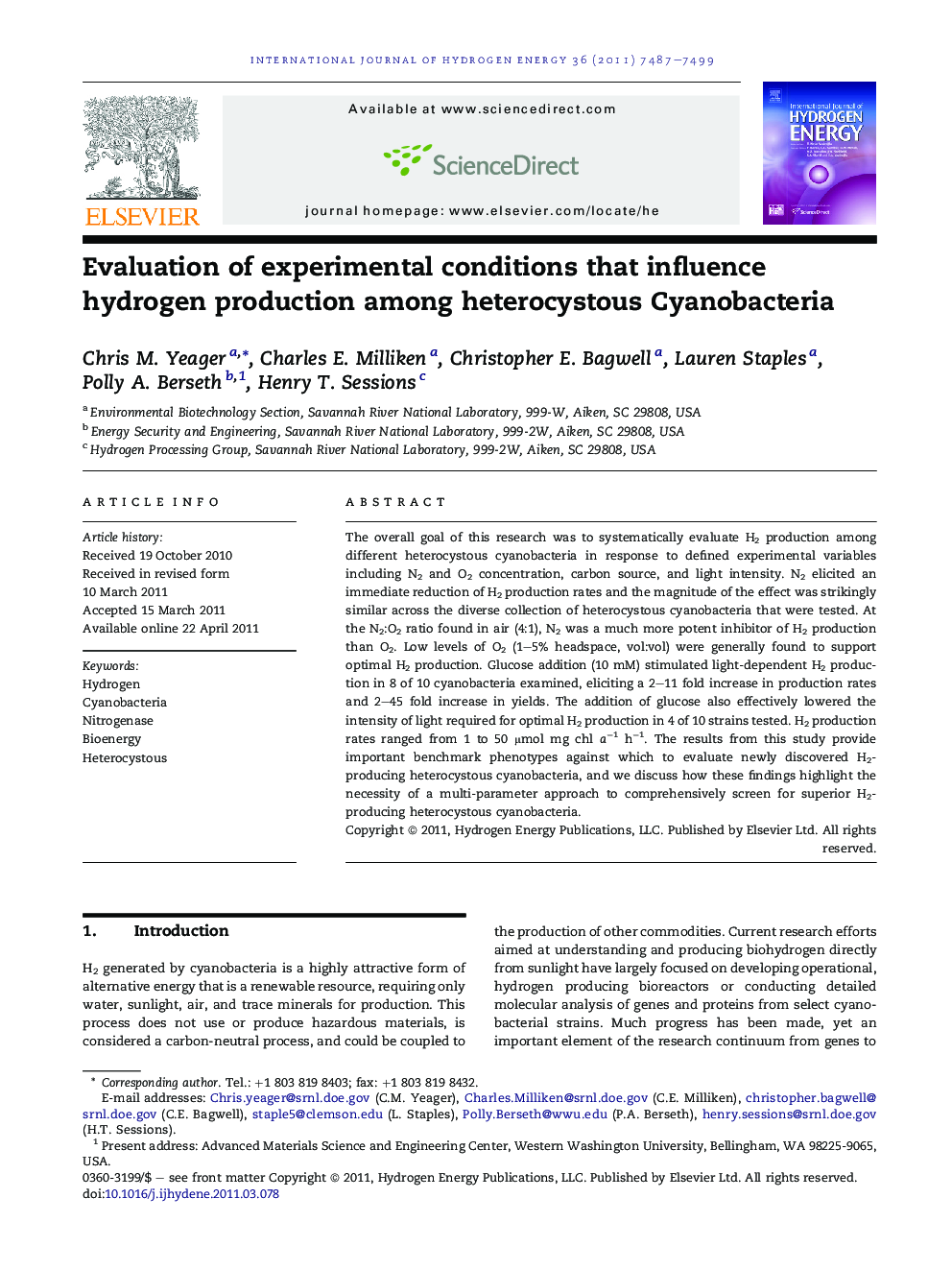| Article ID | Journal | Published Year | Pages | File Type |
|---|---|---|---|---|
| 1279274 | International Journal of Hydrogen Energy | 2011 | 13 Pages |
The overall goal of this research was to systematically evaluate H2 production among different heterocystous cyanobacteria in response to defined experimental variables including N2 and O2 concentration, carbon source, and light intensity. N2 elicited an immediate reduction of H2 production rates and the magnitude of the effect was strikingly similar across the diverse collection of heterocystous cyanobacteria that were tested. At the N2:O2 ratio found in air (4:1), N2 was a much more potent inhibitor of H2 production than O2. Low levels of O2 (1–5% headspace, vol:vol) were generally found to support optimal H2 production. Glucose addition (10 mM) stimulated light-dependent H2 production in 8 of 10 cyanobacteria examined, eliciting a 2–11 fold increase in production rates and 2–45 fold increase in yields. The addition of glucose also effectively lowered the intensity of light required for optimal H2 production in 4 of 10 strains tested. H2 production rates ranged from 1 to 50 μmol mg chl a−1 h−1. The results from this study provide important benchmark phenotypes against which to evaluate newly discovered H2-producing heterocystous cyanobacteria, and we discuss how these findings highlight the necessity of a multi-parameter approach to comprehensively screen for superior H2-producing heterocystous cyanobacteria.
► N2 is a more potent inhibitor of cyanobacterial H2 production than O2. ► Most strains exhibit optimal H2 production when atmospheric O2 is maintained at 25%. ► Glucose typically increases cyanobacterial H2 production rates and yields. ► Bioprospecting for H2-producing cyanobacteria requires a multifactorial approach.
